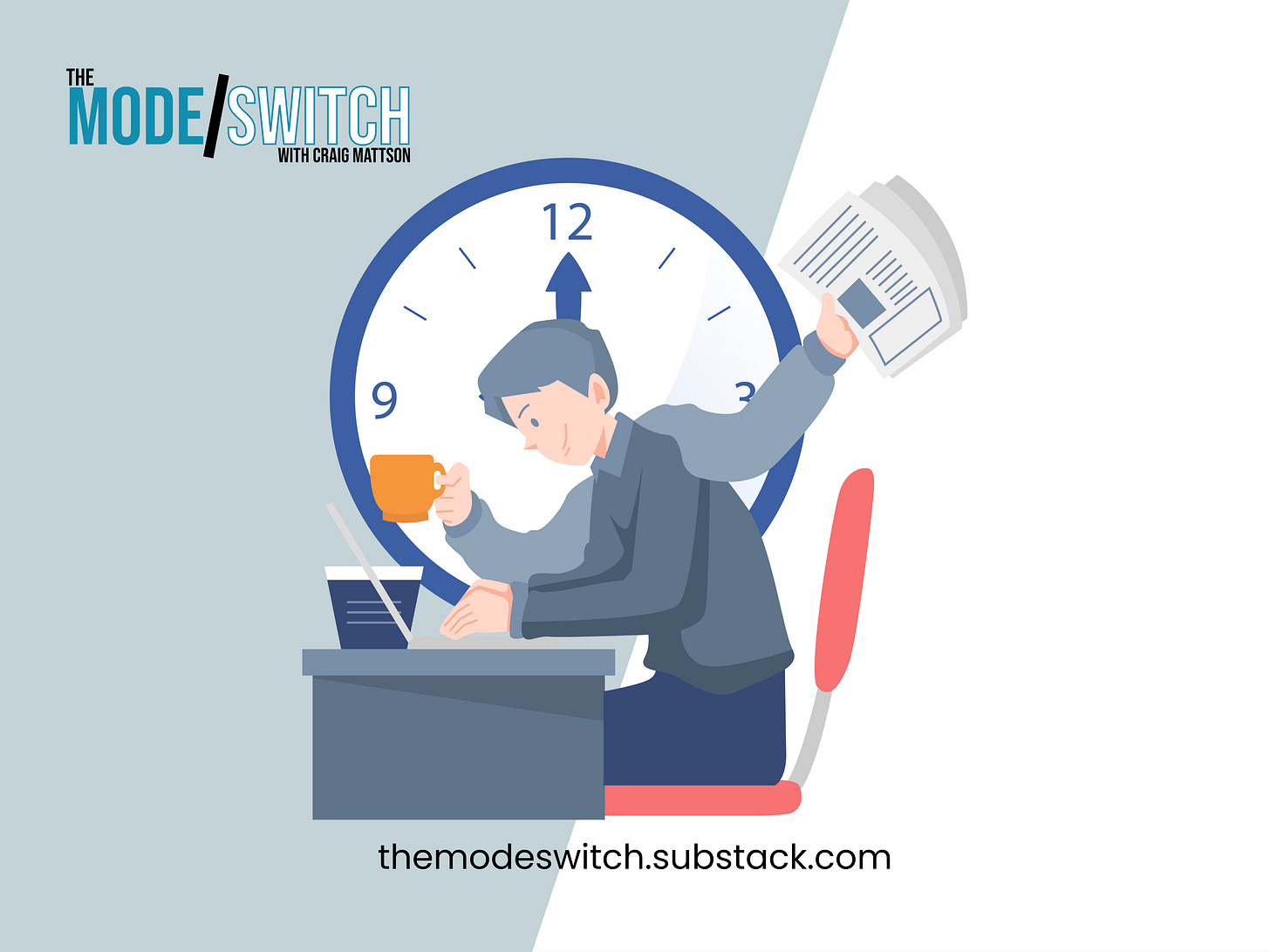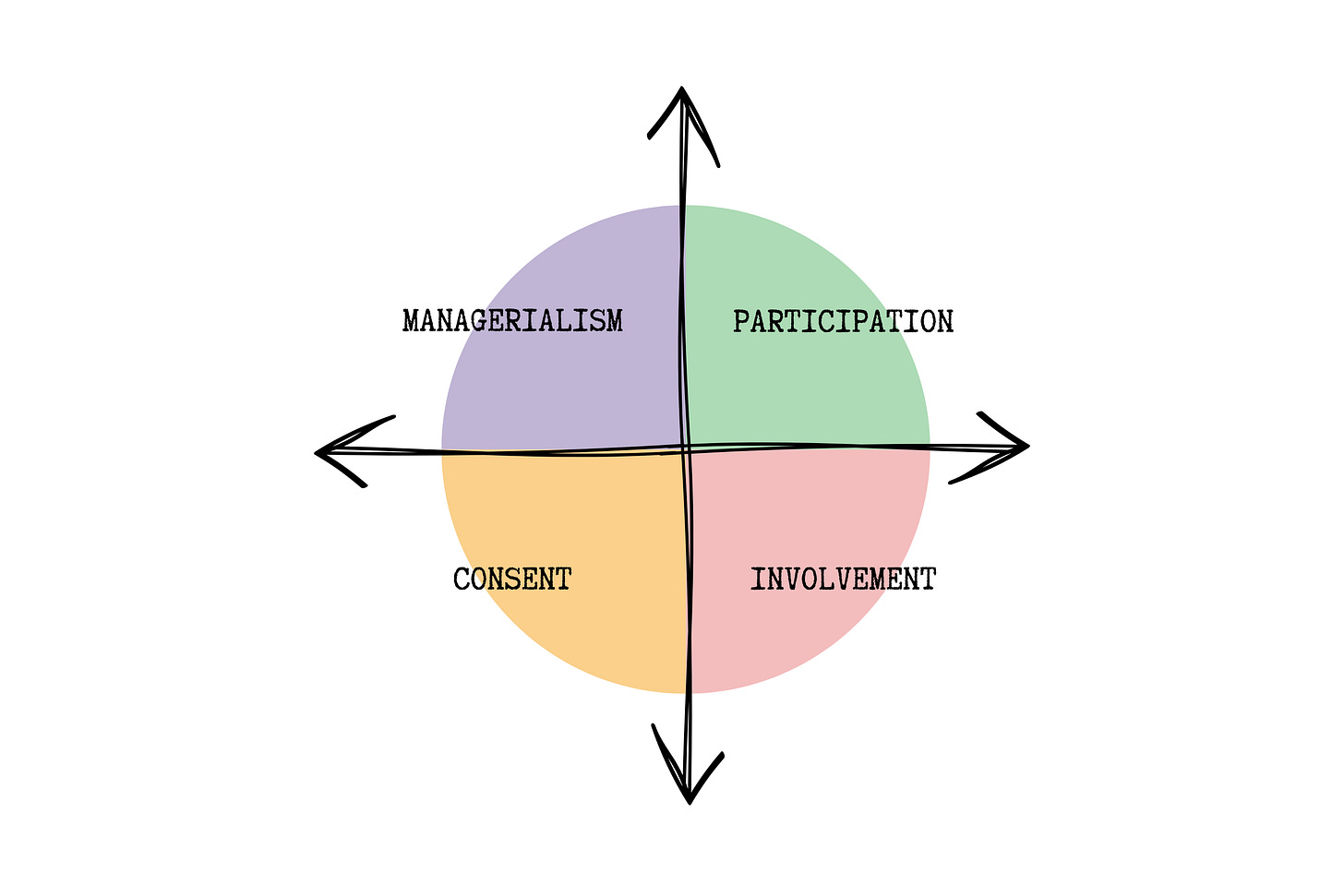Sometimes you gotta ration your amazingness. You have only so many hours, so much strength, so much mental health. But how do you determine when to do A-level work when to do C-level work?
You have your own code, of course. So does your industry. The surgeon Atul Gawande’s book Better reflects on the interaction between personal conscience and the standards of one’s field: “We are distractible, weak, and given to our own concerns. Yet still, to live as a doctor is to live so that one’s life is bound up in others’ and in science and in the messy, complicated connection between the two. It is to live a life of responsibility” (9).
But besides conscience and guild, there’s also workplace culture—specifically, how your organization prioritizes its mission in relation to your wellness. Does your company emphasize getting the job done well whatever the cost? Does your org place a premium on personal health and sustainability? Figuring that out can help you know when to bring your A game and when C- effort is okay.
And how do you figure that out? Be an anthropologist, like one of those 1940s researchers in the Caribbean islands, studying the language and practices of a people group. The good news is that your company’s culture isn’t a thing it keeps hidden. Culture’s not a thing, really. It’s what your company does, what it makes. As you’re in the thick of that culture, like Professor Zei, taking notes (looking for the lost library of Wan Shi Tong), you’re asking how the company decides what work matters a lot and what matters less.
Communication theorist Stanley Deetz tracks 4 ways such decisions get made:
Managerialism. This approach gives all the power to the boss. The good thing about it is that it’s very clear when you need your A game and when you don’t. The tough thing is that it’s hard to change anything about the workplace culture—without exchanging your manager.
Consent. This approach to workplace management is sneaky. The manager gets as many employees as possible to agree that they are doing exactly what they want to be doing—all the while tapping them totally to achieve the company’s goals. When you consent, you feel like you’re bringing your A-game to get your own goals. Really, though, you’re saying yes to the company’s goals.
Involvement. The third decision-making approach feels the most sustainable, because it gives everybody a chance to speak. You feel so articulate, so attended to! Unfortunately, what you say makes no difference. The administration still decides what matters and what doesn’t. (But thanks for putting ideas in the suggestion box, everybody!)
Participation. This approach is the one Deetz admires the most. Every stakeholder gets to help decide what matters and what doesn’t. But keep your wits about you: workplace democracy can be exhausting, especially if you have so much buy-in that you burn out.
But what happens if you figure out your company culture and it looks like it’s going to wear you out? What do you do if the company does prioritize getting the job done profitably whatever the cost—even if that cost is your wellness?
You might seek change inside-out. Think of this as the be-the-change model. Get your inner life in order through spiritual practices, through exercise, through deep breathing throughout the day. This approach helps you withstand the pressures of your workplace culture.
You might seek change outside-in. Think of this as the make-the-change model. Your goal is to change your company’s priorities. Organize with your coworkers. Lobby the shareholders. Get a seat on the committee to revise the policy manual. This approach helps make the pressures of your workplace culture easier to bear.
Most of us oscillate between these two approaches, one focused on the individual against the background; the other, focused on the background for the individual.
But what both these approaches tend to miss is how unstable the background is in relation to the foreground. The thing about organization is how firm they look and how in flux they are. The thing about you (to quote Atul Gawande again) is, your life is bound up in others’. You are more than you. Remember the Butterfly Effect? A famous meteorologist theorized that, given how interconnected the universe is, the flapping wings of a butterfly can change a tornado’s track. Spread your wings a little.
Cal Newport is a Stoic sage of productivity. I read him with fear and trembling, asking plaintive questions like, Is all this rigor what an overwhelmed world needs? More people being more fiercely effective?
Which makes me think of the role of joy in a show that’s gotten sadder this season, Ted Lasso. Episode 2 of Season 3 has Roy and Ted converse. (I hope Cal was watching.)
Roy says of his decision to leave when he was aging out of football, “There’s a part of me that thinks I should have stayed, and just [expletive] enjoyed myself. But that is not who I am, I guess.” And Ted says, “Not yet.”
Been listening to Dawes lately. I’m loving how this song concludes by asking over and over again, “Who do you think you’re talking to?” It’s a question I ask my chatty, wordy, talky Mode/Switcher self. In a world full of newsletters and blogs and pods and books and bloviators, “Who do you think you are, talking, too?” But I’m glad you’re reading in the midst of all the ways you’re contributing to the world’s wellbeing. You’re gift, all gift.
-craig







